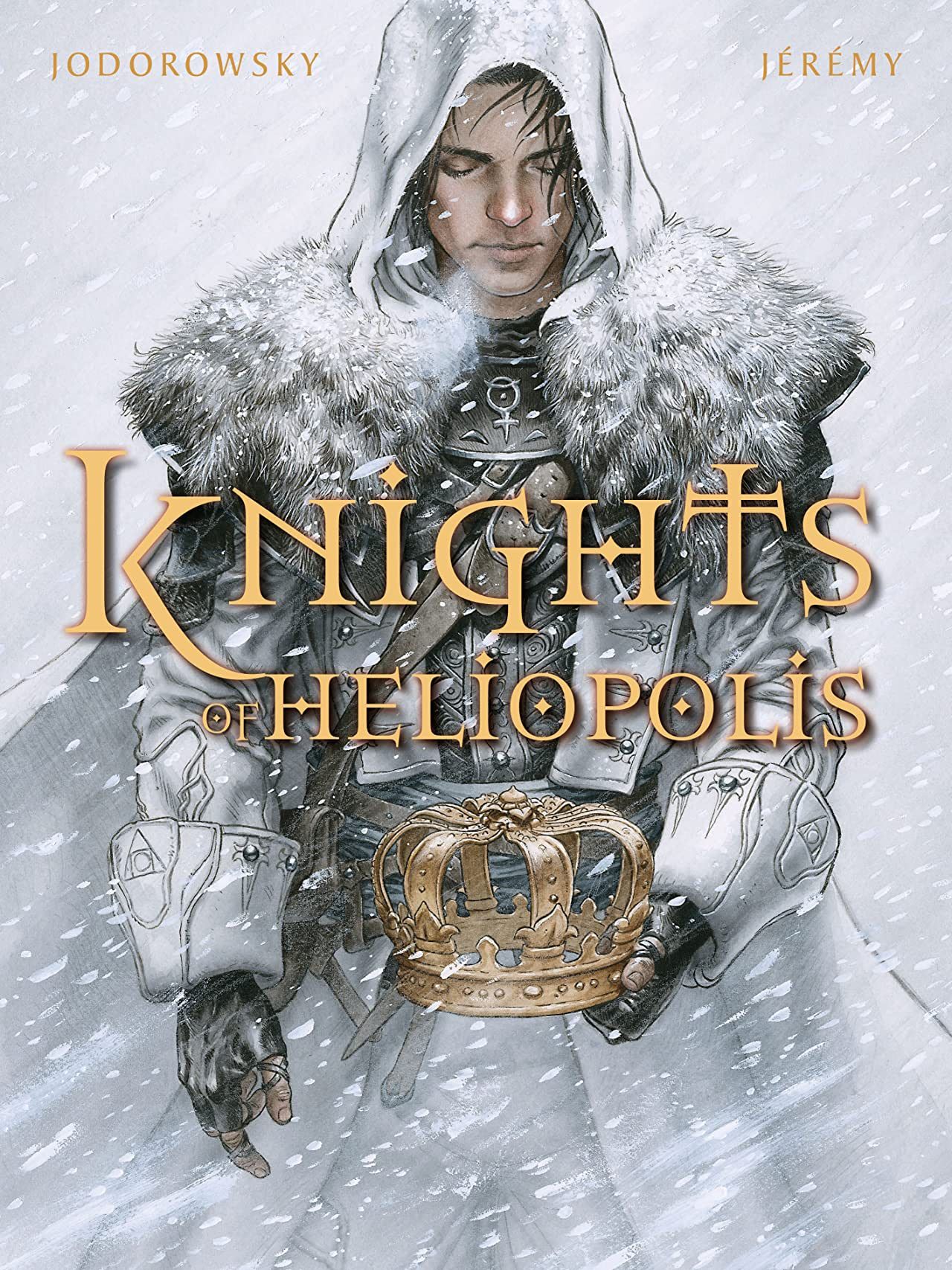Knights of Heliopolis Provides a Fantasy Reimagining of a Literary Classic
- WRITER
- Alejandro Jodorowsky
- Artist
- Jeremy
- Letterer
- Lauren Bowes
- Cover Artist
- Jeremy
- Publisher
- Titan Comics
- Price
- 24.99
- Release Date
- 2021-04-21
One of Alexandre Dumas' most enduring tales revolves around the French historical figure, the Man in the Iron Mask, with the figure playing a prominent part in closing out his Three Musketeers epic. The legend surrounding the masked prisoner's identity and alleged illicitly royal lineage is transposed into a fantasy story in Alejandro Jodorowsky and Jérémy's original graphic novel Knights of Heliopolis, with the comic book receiving an English language translation from Titan Comics, translated by Marc Bourbon-Crook. And while the artwork is breathtakingly beautiful and the reimagining of the classic story in the fantasy genre fits well, this edition is a bit uneven in its delivery.
In the remote mountains of Northern Spain in the 18th century, as France appears poised to experience a sweeping revolution, royal lineages and conspiracies surface. French monarch King Louis XVI fathers a secret son with Marie Antoinette as he faces his supernatural destiny haunting the halls of Versailles. Years after the Reign of Terror and fall of the French aristocracy, a star pupil among an order of alchemical knights, known simply as XVII, discovers he is the long-lost son of Louis and Marie, and he was smuggled out of France as they faced their executions. And as XVII prepares to complete his rigorous training and fully join the clandestine order, he learns that his lineage and its connections to European royalty are far more complicated than he had realized.
Jodorowsky and Jérémy' make a natural creative pairing, capturing the pre-Napoleonic era romanticism of Western Europe while showcasing its swashbuckling fantasy possibilities; this a comic book that opens with a sword fight against a gorilla and a French palace filled with spectral apparitions so the shift to supernatural fantasy is clear right from the outset. Jodorowsky is using early 19th century France merely as a backdrop for a more epic story; this is a tale more inspired by Dumas and his contemporaries than beholden to them. Similarly, Jérémy's artwork is painted gorgeously, from the quieter, more intimate moments between characters to the thrilling action set pieces peppered throughout the story; the French Revolution has served as the setting for many a swashbuckling story, from the aforementioned Three Musketeers to The Scarlet Pimpernel, and this certainly delivers on that expectation while bringing a little literal magic to the proceedings.
The more glaring obstacles this story faces is within its English translation; some of the dialogue comes off more stilted and awkward than they likely do in the original French text, and not every idiom translates as cleanly as it probably should. This is by no means an inaccurately translated story, per say, but it definitely feels like it something was lost in translation. Similarly, the lettering -- at least in this advance review copy -- can come off as a bit obtrusive at times, especially overlayed over the artwork.
RELATED: Scout Comics' The Impure #1 Is an Ambitious But Uneven Sci-Fi Adventure
Released shortly after Ibrahim Moustafa's reimagining of The Count of Monte Cristo as a science fiction original graphic novel at Humanoids, that tale and Knights of Heliopolis prove there is plenty of imagination and potential left in centuries-old texts by Alexandre Dumas for modern audiences in the comic book medium. Fantastical, thrilling and just a lot of fun Knights of Heliopolis overcomes the clunkier, more uneven aspects of its adaptation to deliver a beautiful new approach to the classic story without compromising on its intrigue or swashbuckling fun.
KEEP READING: Wynd Book One: The Flight of the Prince Is an Epic Coming-of-Age Fantasy

